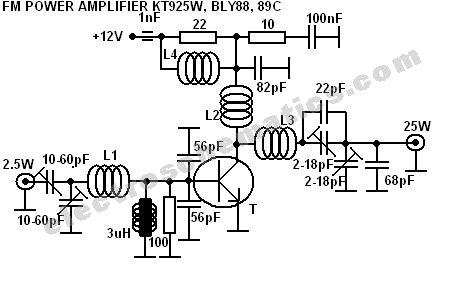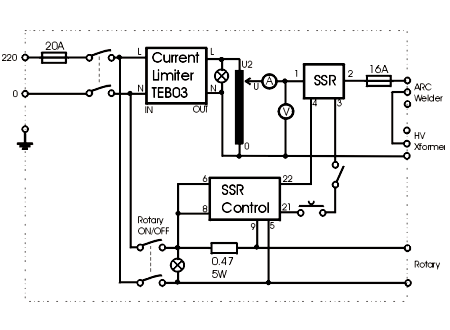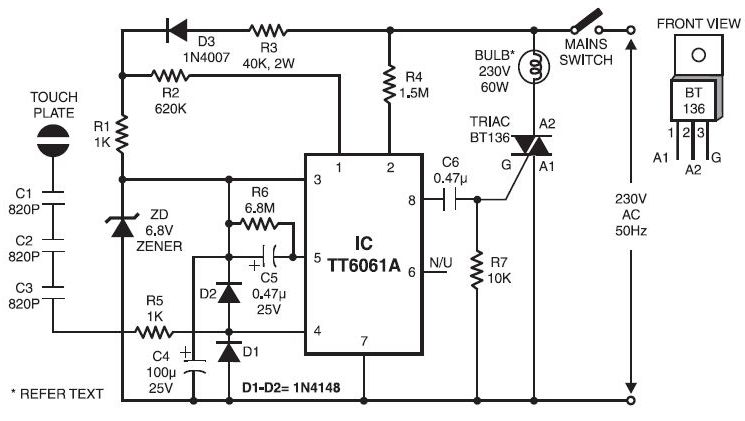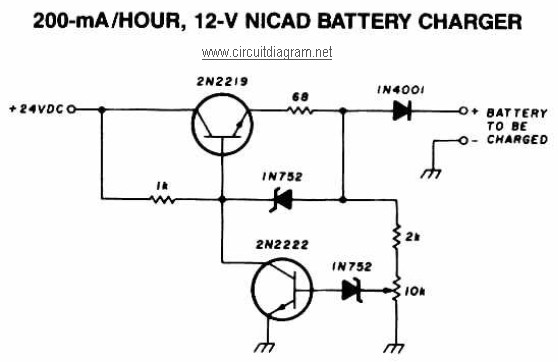
Intermittent start and stop cycle control circuit Five of a
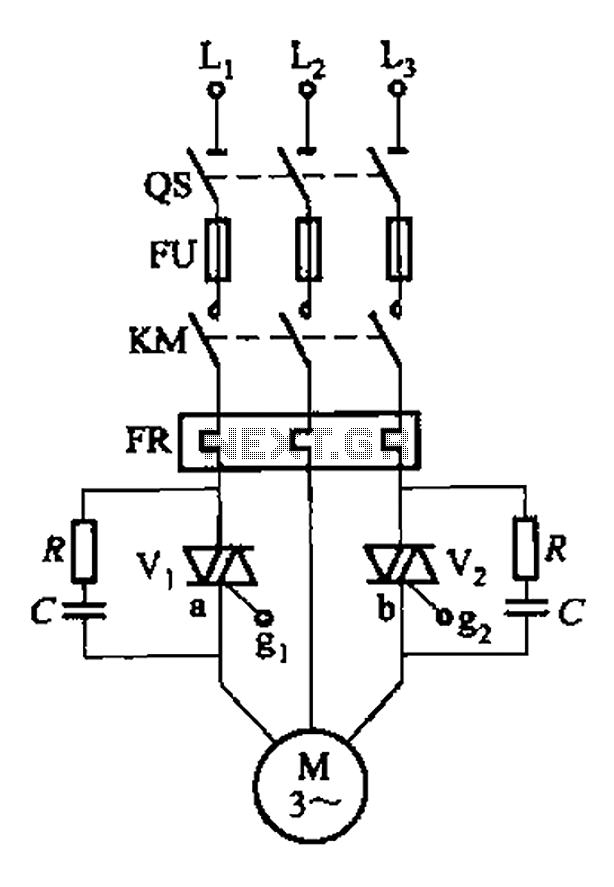
The circuit depicted in Figure 3-80 is responsible for controlling a portion of the transistor multivibrator. A multivibrator serves as a robust positive and negative feed-forward amplifier, consisting of two branches that are interconnected through a coupled RC timing circuit, resulting in a lack of steady state. The circuit includes an RPi adjustment potentiometer and RP2, allowing for modifications to the motor's running and stopping times.
The circuit operates using a transistor multivibrator configuration, which is designed to generate oscillations. This type of circuit typically consists of two transistors that alternately switch on and off, creating a square wave output. The coupling between the two branches is achieved through capacitive and resistive elements, forming an RC timing circuit that influences the frequency of oscillation.
The inclusion of the RPi adjustment potentiometer provides a means to fine-tune the timing characteristics of the circuit. By adjusting this potentiometer, the user can modify the charge and discharge times of the timing capacitors, thereby controlling the duration of the output pulse. This feature is particularly useful for applications where precise motor control is required, allowing for adjustments to be made while the motor is in operation.
The RP2 component also plays a critical role in the timing adjustments, serving as an additional variable resistor that can be configured to alter the resistance in the timing circuit. This flexibility ensures that the multivibrator can be tailored to meet specific operational requirements, enhancing the overall functionality of the system.
In summary, the circuit in Figure 3-80 exemplifies a versatile multivibrator design that integrates timing control through adjustable components, making it suitable for various applications where motor speed and operation timing are crucial. Circuit shown in Figure 3-80. Which controls part of the transistor multivibrator. Multivibrator is a strong positive and negative feed-forward amplifier, its two branches are coupled RC timing circuit, so there is no steady state. RPi adjustment potentiometer and RP2. You can change each time the motor is running and stop time.
The circuit operates using a transistor multivibrator configuration, which is designed to generate oscillations. This type of circuit typically consists of two transistors that alternately switch on and off, creating a square wave output. The coupling between the two branches is achieved through capacitive and resistive elements, forming an RC timing circuit that influences the frequency of oscillation.
The inclusion of the RPi adjustment potentiometer provides a means to fine-tune the timing characteristics of the circuit. By adjusting this potentiometer, the user can modify the charge and discharge times of the timing capacitors, thereby controlling the duration of the output pulse. This feature is particularly useful for applications where precise motor control is required, allowing for adjustments to be made while the motor is in operation.
The RP2 component also plays a critical role in the timing adjustments, serving as an additional variable resistor that can be configured to alter the resistance in the timing circuit. This flexibility ensures that the multivibrator can be tailored to meet specific operational requirements, enhancing the overall functionality of the system.
In summary, the circuit in Figure 3-80 exemplifies a versatile multivibrator design that integrates timing control through adjustable components, making it suitable for various applications where motor speed and operation timing are crucial. Circuit shown in Figure 3-80. Which controls part of the transistor multivibrator. Multivibrator is a strong positive and negative feed-forward amplifier, its two branches are coupled RC timing circuit, so there is no steady state. RPi adjustment potentiometer and RP2. You can change each time the motor is running and stop time.

